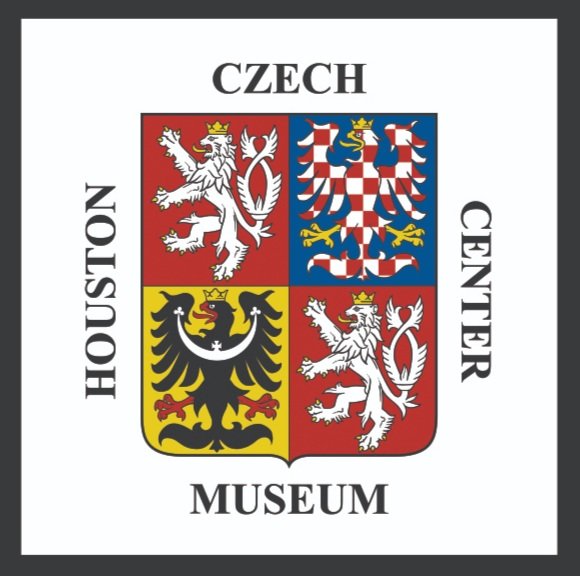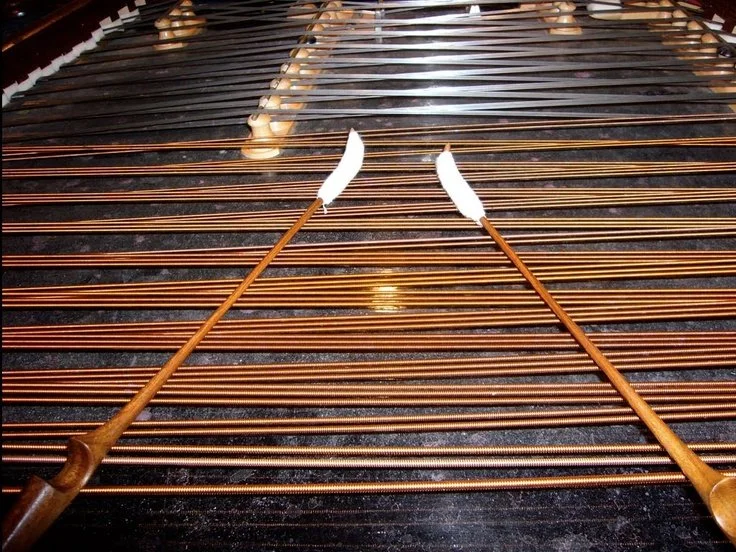With Jan Hus’s execution at the Council of Constance in 1415, the Church and Holy Roman Emperor believed that the issues of Bohemian heresy had been successfully resolved. However, Bohemia erupted into protest and revolt in response to the death of Jan Hus. Expelling the Catholic priests and throwing the city council members from the New Town Hall windows, the Hussites of Bohemia refused to accept the authority of the Church or their king. To quell this revolution, Holy Emperor Sigismund and Pope Martin V launched an invasion and five crusades against Hussite Bohemia, calling upon the Christian world to lend them aid. However, led by a man named Jan Žižka and later Prokop the Great, the Hussites would not be so easily defeated.
Lubo Kristek: A Believer of Holographic Perception in Art
Lubo Kristek is an artist of Czech origin who assisted in furthering the European postmodern cultural movement through the usage of different media and forms. Regarding art styles, he would utilize surrealism, happening, performance art, and postmodernism. Lubo Kristek’s most notable works are mostly performance art pieces or sculptures.
Zvíkov Castle
Zvíkov Castle is one of many Bohemian structures to stand the test of time, beginning in the early 1200s. Although it survived many wars, it succumbed to one of them, being conquered and vandalized before getting used as a farming area and being damaged by a fire. However, future land owners restored Zvíkov Castle, which eventually made it one of the oldest and most well-preserved castles in the Czech Republic. Lastly, there are legends of various entities inside the castle.
Strings of Heritage: Exploring the Cimbalom
The cimbalom is a unique instrument hailing from Slovak history. It is played by felt mallets, similar to drum sticks, which are hit against piano-like strings. A variety of sounds can be produced by the cimbalom, ranging from rolls to glissandos to staccatos. From the Byzantine era to the modern day, the cimbalom is an underrated, yet appreciated and distinguished instrument.
History of the Czech National Theatre
The Czech Republic National Theatre serves as a reminder of the strength, persistence, and culture of its people and their history. It is remembered and held as a national symbol of the Czech Renaissance, its importance in the arts, and the unification of the people towards one goal, regardless of other factors. This theatre has had a long and fascinating history that continues today.
History of Karlštejn
Karlštejn Castle was built by Bohemian King and Holy Roman Emperor Charles IV to house holy relics and the crowns of the kingdom and empire. Karlštejn Castle consists of three different levels, those being the Imperial Palace, the Marian Tower, and the Great Tower. Throughout the castle, Karlštejn housed many jewels and precious stones, symbols of royal authority and legitimate monarchy. Karlštejn Castle remains a cultural, historical, and architectural icon in central Europe and the Czech Republic.
Alfons Mucha: Father of Art Nouveau and Proud Czech
Alfons Mucha was an illustrator and the originator of the Art Nouveau movement. After being expelled from school for doing poorly, he decided to become a professional artist but still had trouble getting accepted by the Acadamy of Fine Arts in Prague, meaning he had to begin with a modest career. With the aid of a wealthy benefactor, Mucha worked as an illustrator in Paris, where he found his first lucky break when being commissioned to work on the commercial advertisement of Sarah Bernhardt’s Gismonda. This was the moment when his career prospects and celebrity skyrocketed.
The Life of Zuzana Růžičková
Zuzana Růžičková was a prominent pianist and musician. Although her life began with sickness, learning the piano and the harpsichord provided Růžičková with a passion to pursue throughout her life. The occupation of the Nazis in Czechoslovakia interrupted her life, like the lives of others, but her passion for music remained indefinitely throughout. Throughout her adult life, Zuzana Růžičková would proceed to win accolades and perform around the world, remaining a part of the Czech musical community until her death in 2017.
St. George’s Basilica and the Benedictine Nuns
St. George’s Basilica, the second church built in the Prague Castle was adopted by Benedictine nuns. Because of their involvement and the location of the basilica, it provided the citizens of Prague a place to socialize and politically organize. The existence of this convent provided girls and women to participate in the religious and educational landscape of Bohemia.
July 5: Day of Saints Cyril and Methodius
Saints Cyril and Methodius have shaped the history of Christianity and even language in Eastern Europe. By translating the Holy Bible into the Slavic languages, they were able to convert many Slavs to Christianity. Their efforts have resulted in the existence of the Cyrillic Alphabet through the development of the Glagolitic Alphabet, for example. July 5 is the day when the Saints’ far-reaching efforts are recognized.
Emil Zátopek: The Marathon Man Who Revolutionized Long-Distance Running
Emil Zátopek, born in 1922 in Kopřivnice, Czechoslovakia, rose from humble beginnings to become a long-distance running legend. His tough training methods, such as running in heavy boots and intense sprint sessions, prepared him for great success. At the 1952 Helsinki Olympics, he made history by winning gold in the 5,000 meters, 10,000 meters, and marathon—his debut in the event—setting new records. Zátopek's influence transcends his athletic achievements, inspiring generations with his innovative training philosophy and resilience in the face of challenges. His legacy remains a beacon in the world of sports.
Czechs and Coffee
Although Prague is known for its beer, another important stable of Czech culture includes coffee and coffeehouses. Coffeehouses provided a place for the poor, men, and particularly women to congregate, discuss, organize, and entertain. Although the use of coffeehouses by women was mired in controversy due to brothels attached to some of them, coffeehouses still provided a place for women to discuss societal emancipation. The Café Louvre is one such coffeehouse that has served as a bedrock for many historical figures to organize and entertain and continues to do so to this day.
Zdeněk Koubek: Competitive Sports and Gender
Zdeněk Koubek was a transgender track athlete who began his life fascinated by athletics, particularly after his family moved to Brno. He pulled his way up the sports ladder, beginning as a coach and instructor while training, breaking and setting national records, then winning two medals in the Women’s World Games. Koubek’s success, however, was met with doubt, as his androgyny caused the public to question the validity of his competitive success. The issues Zdeněk Koubek faced in the past reflects modern controversial topics in competitive sports.
Czech Dogs and their History
The Czech Republic is home to seven different dog breeds with a storied history. The Bohemian Shepherd, for example, is the oldest breed, developed to guard the Kingdom of Bohemia. Most of these breeds were developed for rescue missions and hunting, either with a human companion or on their own. These Czech dog breeds have shaped the nation and continue to provide companionship and support to this day.
Brief History of Pankrác Prison
In the late 19th century, Pankrác Prison was built to replace the old St. Wenceslas Prison. Built with what many considered to be modern amenities for a prison of its time, Pankrác Prison would go on to be used through the Habsburg monarchy, Nazi occupation, and communist rule, up until today where it is still in use.
Brief History of Czech Bunkers and Their Future
Daliborka Tower and the Legend of Dalibor
Descend into the legend of the Daliborka Tower and its namesake, Dalibor of Kozojedy, where he was imprisoned. You will learn about Dalibor and his violin, the structure of the tower, and what it is used for today. For example, you’ll learn how his placement inside the tower began due to a dispute between him and a Czech noble due to the treatment of peasant serfs.
Eliska Junkova: Queen of the Steering Wheel
Epidemiologist Ervin Adam helped eradicate polio in Czechoslovakia
Ervin Adam, a world-renowned Czech epidemiologist, died on 3/21/23 at the age of 101 in Houston, Texas. The doctor, who was instrumental in Czechoslovakia being the first country in the world to eradicate polio, went through several concentration camps during World War II because of his Jewish origin and survived a death march. From 1968 he lived in exile – first in Canada and later in the United States. In 2013 he received the prestigious Czech Head Award.
The Hussite Reformation: The Council and Trial of Jan Hus
Following his continued preachings of reform and his various excommunications, Jan Hus was called by Holy Roman Emperor Sigismund to come to the Council of Constance as part of his plan to resolve the issue centered around Czech heresy. The Council of Constance, which was convened in 1414 to solve the Western Schism, succeeded in its goal of doing just that. However, the council’s handling of Jan Hus and his growing Hussite following would prove far from successful. Imprisoned and put on trial, Jan Hus’s fate was in the hands of those who were to make a disastrous mistake in the long run and unleash war in Bohemia.














